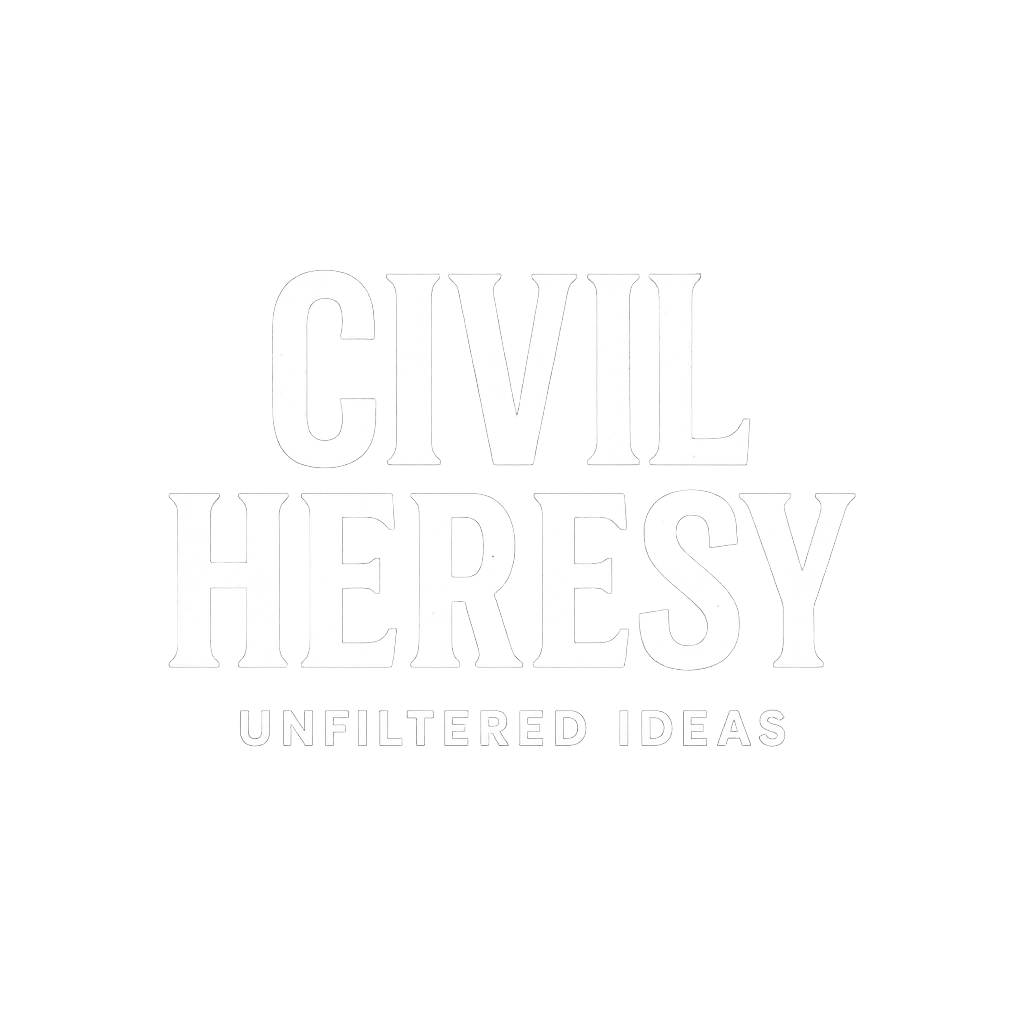By “We the People”
In today’s polarized political climate, many Americans vote strictly along party lines—particularly conservatives who reliably support Republican candidates, often without fully examining the ideologies they are endorsing. This kind of blind loyalty may feel like patriotism, but it can be dangerously misguided when it obscures hard truths and unsettling histories. If you’re among those who vote Republican out of habit, tradition, or identity, I urge you to take a step back and look more closely—not at the soundbites or the campaign slogans, but at what these leaders actually believe, what motivates them, and how that belief system connects to some of the darkest chapters in human history.
What Do They Really Believe?
The rhetoric politicians use during campaigns is carefully crafted to inspire, not inform. But behind the polished words are ideologies with real-world consequences. Understanding what drives certain leaders—whether it’s power, greed, fear, or deeply disturbing beliefs—requires more than listening to speeches. It takes research, critical thinking, and the courage to question.
One ideology that has disturbingly reemerged in modern discourse is eugenics—the belief that certain people are genetically superior and that society should be “purified” by controlling who is allowed to reproduce. While it sounds like something out of a dystopian novel or a history textbook, eugenics was once widely accepted—even celebrated—by many prominent Americans.
America’s Eugenic Legacy
In the late 19th and early 20th centuries, figures like Theodore Roosevelt, Helen Keller, Herbert Hoover, Oliver Wendell Holmes, and even Winston Churchill supported eugenic ideas. Some advocated for sterilization of those deemed “unfit”—a term that was broadly applied to the poor, the disabled, immigrants, and people of color.
Indiana passed the first forced sterilization law in 1907. Over time, dozens of states followed. Immigration laws were rewritten to drastically limit the entry of people from non-European countries. The goal was to “protect” the American gene pool from dilution by those seen as inferior. These weren’t fringe ideas—they were government policy.
From American Policy to Nazi Inspiration
Adolf Hitler and his propaganda minister Joseph Goebbels openly admired American eugenics. The Nazis modeled early sterilization programs on what the U.S. had already done. Before the Holocaust began, the Nazis sterilized over 400,000 people—those with disabilities, mental illness, or who simply didn’t fit their vision of racial purity. That was only the beginning. Jews, Roma, Black people, LGBTQ individuals, political dissidents, and anyone seen as a threat to the Aryan ideal were soon targeted for elimination.
The warning signs were ignored. Until it was too late.
Today’s Disturbing Echoes
Fast forward to today. President Donald Trump and his senior advisor Stephen Miller have made statements and supported policies that bear chilling resemblance to eugenic thought. Miller has been tied to white nationalist and neo-Nazi figures, and his fingerprints are all over the most extreme immigration policies of the Trump era—including family separations and the targeting of non-white immigrants.
This isn’t just about politics—it’s about ideology. The targeting of immigrants isn’t based on crime statistics or job competition—it’s about demographics. It’s about shaping the future of America into a whiter, “purer” nation. If that sounds familiar, it should.
And once the door is opened, the list of “undesirables” always grows:
- The undocumented.
- The disabled.
- The mentally ill.
- The LGBTQ community.
- Black and Indigenous communities.
- Religious minorities.
- The poor.
- Political opponents.
History shows us that these ideologies never stay contained. Today’s ally can become tomorrow’s enemy if they don’t fit the mold. Many of the voters who support these politicians—particularly in rural, under-resourced areas—may one day find themselves labeled as “unfit” too.
Who Will Be Next?
This is not alarmism. This is historical pattern.
Hitler didn’t start with concentration camps. He started with laws, language, and propaganda that normalized the idea that some lives were worth more than others. That some people were threats simply by existing. We are seeing those same themes being repackaged today—less obvious, more subtle, but no less dangerous.
You Have a Choice
So I return to the question I began with: Do you really know the people you’re voting for? Have you examined what they believe—not just what they say, but what they do? If the answer is no, now is the time to start asking questions.
Because when you vote for someone who supports eugenics in any form—whether through rhetoric, policy, or association—you’re not just making a political statement. You’re helping to resurrect a deadly ideology that once brought the world to its knees.
You may think you’re safe because you’re on the “right side,” but remember: The list always grows.
Don’t wait until they come for you.
Further Reading: Eugenics, Extremism, and the Danger of Blind Allegiance
Support independent bookstores by using Bookshop.org affiliate links:
How Fascism Works by Jason Stanley – https://civilheresy.com/How Facsism Works
A chilling breakdown of how authoritarian movements take hold—and how they echo historical fascism.
The Origins of Totalitarianism by Hannah Arendt – https://civilheresy.com/The Origins of Totalitarianism Expanded Edition
A classic analysis of how ideologies like Nazism and Stalinism emerge—and the societal conditions that allow them.
White Rage by Carol Anderson – https://civilheresy.com/White Rage
Examines how systemic racism in U.S. policy continues to evolve under the surface of mainstream politics.
If this moved you, share it!
